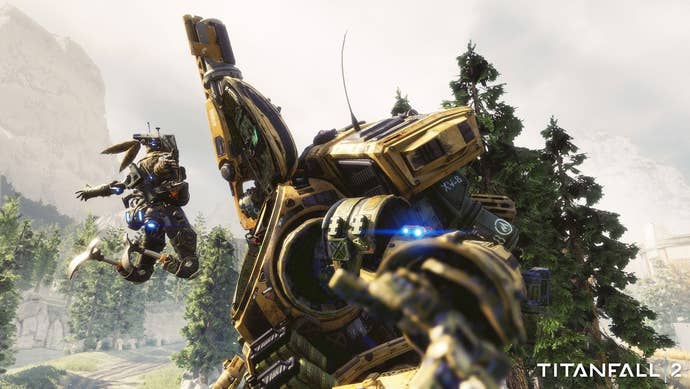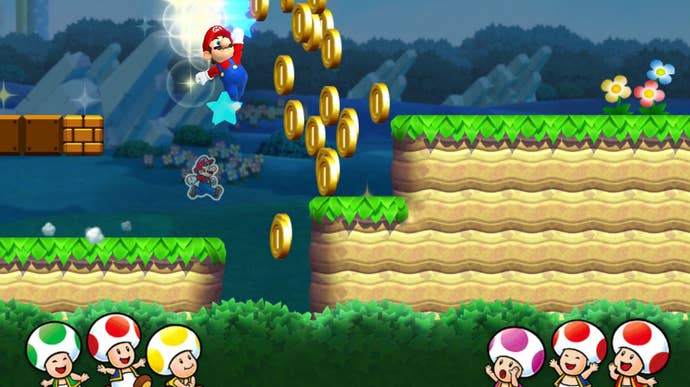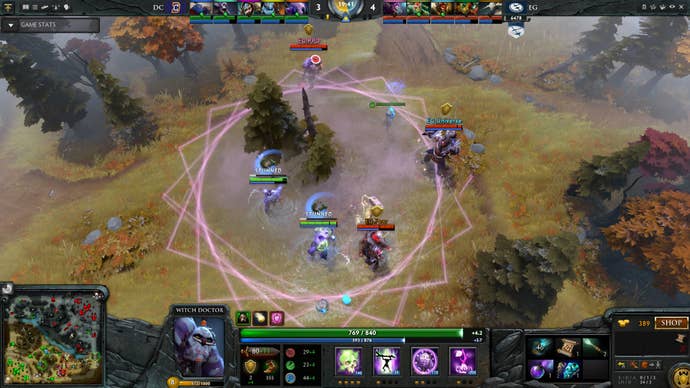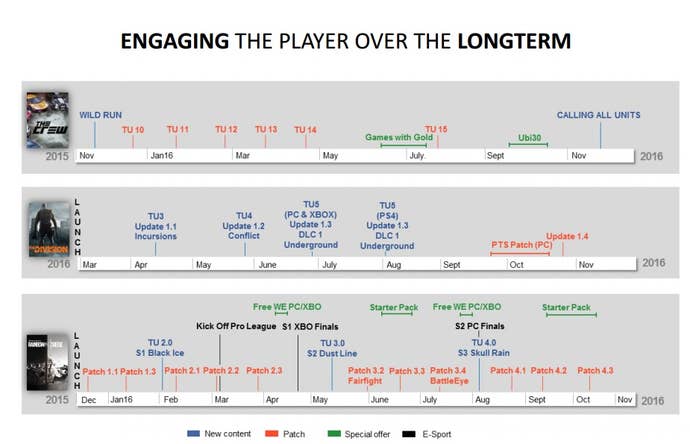The Trials of AAA and The Rise of the Never-Ending Service Game
2016 in Review: Big budget gaming continues to strain against high expectations and the middling reality.
This article first appeared on USgamer, a partner publication of VG247. Some content, such as this article, has been migrated to VG247 for posterity after USgamer's closure - but it has not been edited or further vetted by the VG247 team.
2016 was a rough year for AAA. It seems that this year more than any other, a number of high-profile games just didn't perform. Battleborn from Gearbox Software challenged Blizzard Entertainment's Overwatch and was found wanting. The sales of Quantum Break were soft. Street Fighter V's sales have stalled at around 1.4 million units. That was just earlier in the year.

Within the past few months, the hits have kept coming. Titanfall 2 debuted on the October 2016 NPD charts at number #9, having launched between Battlefield 1 and Call of Duty: Infinite Warfare. Looking at UK numbers, Titanfall 2 was down 75 percent compared to its predecessor. Likewise other games failed to match early sales of previous entries in that region: Call of Duty: Infinite Warfare was down 48 percent, Dishonored 2 was down 38 percent, and Watch Dogs 2 was down 80 percent. In a third-quarter financial report, GameStop said that all October releases underperformed forecasts at retail.
Before one thinks this is a Western-only phenomenon, even major Japanese releases are suffering. Final Fantasy XV sold 690,471 in its first week at retail according to Media Create charts. That's way down from the 1.5 million sold by Final Fantasy XIII during its debut week. It didn't hold out on week any better than other FF titles either: it had a normal drop of 88 percent, selling only 79,792 units. Yakuza 6: The Song of Life won last week with 218,168 copies sold, but that's drop its predecessors: Yakuza 5 opened with 356,757, Yakuza 4 sold 383,972 units, and Yakuza 3 debuted with 372,000.
That's not to say there weren't winners - games like Battlefield 1 and Pokemon Sun/Moon say 'hi' - but the losers seem to be growing and follow-ups to solid series aren't living up to the sales numbers of their predecessors.
So what's going on?

One could guess that the quality of the titles wasn't up to snuff, but that can't account for all of the games that underperformed. I'd argue that for many, they were better than their previous entries. Perhaps there's a general lack of excitement. In the comments of that linked article, some noted that even if Titanfall 2 and Watch Dogs 2 were improved over their predecessors, the games looked functionally the same. I can't argue that that's not the case. Developers and publishers try to hit the same visual aesthetic so they don't alienate fans, but this means they're likely to turn off those who can't see what's different about a new entry.
Speaking previous entries, past failures and missteps can come back to haunt developers and publishers. In the case of games like Watch Dogs, Titanfall, and Final Fantasy, failing on past promises can lead to consumers looking at new entries with skepticism. A lack of trust frequently means a lost sale. Ubisoft promised the moon with the first Watch Dogs and delivered an okay open-world title; Watch Dogs 2 might be better, but the goodwill is already gone. Final Fantasy XV might be a good revitalization of the franchise, but many still contend with their dissatisfaction over Final Fantasy XIII.
There's also something to be said for sales lost to digital distribution. Platforms like Steam, PlayStation Store, and the Xbox Store are where players are increasingly buying their games from. It's simply easier to never leave home, pre-load a game, and have it unlock on launch day. Those sales aren't tracked through third-party retail analysis like the NPD, Chart-Track, or Media Create charts. But that doesn't cover sales disappointments as reported by the publishers themselves, or in many cases, a notable lack of crowing over great sales numbers.

Overall market sales aren't down. They were up 31 percent for October 2016 in the US, and while they were down 24 percent year-over-year for November, that's because November 2015 saw much larger releases in comparison. So consumers aren't spending less money.
The difference is one that the industry has made on its own. The big change is the service game.
To be reductive for a moment, in the beginning of the last generation of consoles used to be there were three different levels of consumer. There was the casual game player, who only interacted with games occasionally. There were the mid-range consumers, the folks who have game consoles, but whose play is usually limited to two or three titles a year: Call of Duty, Battlefield, Madden, FIFA, Assassin's Creed. Then there was the enthusiast consumer. The folks that put a whole lot of time into gaming as a hobby and lifestyle.
The casual game player fell by the wayside with the rise in smartphone gaming. For all its effort, that's the market Nintendo continues to try and capture. Sometimes they succeed, like the Wii and the recently-released Super Mario Run. Sometimes they fail, like the Wii U. The Switch looks to split the difference, straddling the line between console, portable, and mobile. We'll see how that works out.

So that leaves the mid-range and enthusiast consumers in play. It used to be that those consumers would play a big-budget AAA title for a month and then move onto the next game. This even led to the rise of the backlog, a list of games that in your library that are waiting for you while you polish off your current focus. With a service game though, your playtime and engagement with the game never truly ends. There's no real win state, you just drop time and money into the game until you feel satisfied.
The idea started with massively-multiplayer online games and free-to-play titles, but now, it's everywhere. Major publishers have gotten smarter about it, either giving away the game for free and charging for cosmetic additions or boosts; or charging the player for a full $60 game, but offering up Season Passes, expansions, and smaller microtransactions.
In my own circle of friends, the mid-range players who once shifted from NBA, to Madden, to Call of Duty over the course of a year are now playing a single game: Bungie's Destiny. It used to be they played until they got bored, went away for a bit, and came back for the next game. Now they play for a bit, go away for a bit, and come back for the next expansion.

The same is true of the enthusiast players these days. Here's a list of Steam's Top Games by Current Player Count, as of this writing:
- Dota 2
- Counter-Strike: Global Offensive
- Grand Theft Auto V
- Team Fortress 2
- Rocket League
- Warframe
- Garry's Mod
- ARK: Survival Evolved
- Rust
- Sid Meier's Civilization V
Of those games, not a single one came out this year.
I can list a number of games off the top of my head that keep players playing forever. Dota 2, League of Legends, Overwatch, Hearthstone, Grand Theft Auto V, Team Fortress 2, Counter-Strike: Global Offensive, Destiny, Minecraft, The Division, Ark: Survival Evolved, Rust, Final Fantasy XIV, World of Warcraft, Warframe, Rainbow Six Siege, Skyrim. Some of the are purely online titles. Some are MMOs, some are free-to-play. Some have strong mod communities that keep players engaged long after the publisher has moved on. The point is there's always something to do and very little reason to leave.

Publishers and developers are learning from this. Ubisoft has already stated that The Crew and Rainbow Six: Siege have turned out to be sales successes for the publisher after soft starts. They have strong communities that keep playing and keep spending money.
"Our excellent performance in the second quarter as well as the sharp improvement in our profitability during the first six months of the fiscal year are proof that we have gotten both our digital strategy and our approach to multiplayer games right. The Crew, The Division and Rainbow Six Siege each have more than 10 million registered players, demonstrating that we are effectively executing our business development plan and moving towards an ever-more recurring model," said Ubisoft CEO Yves Guillemot in November.
The "ever-more" part is what you should be focusing on. Why make games like Watch Dogs 2 that tell a single story with a few online hooks, when you can build online-focused games that continue on like Steep and For Honor? Especially, when the sales don't justify the former model.

Likewise, Activision has Destiny and Call of Duty, one built like an MMO and the other with a hefty season pass and strong eSports scene. Rockstar has let modders run wild on Grand Theft Auto V, but they've also offered up GTA Online, which makes great money for the company long after people have stopped playing the campaign. Red Dead Redemption 2 will likely have a Red Dead Online mode.
The rise in episodic games is one way for games that tell a narrative to live within this changing market. Take one story, divide it into a number of episodes that you release over time, and players will keep coming back. Telltale Games has lived off episodic storytelling since its inception. Life is Strange worked out well enough for Square Enix and Dontnod that the publisher released a physical limited edition and is working with Legendary on a live-action series. Hitman also seems like a rousing critical success and the publisher is going episodic for the upcoming Final Fantasy VII remake.
Publishers are learning, turning to online, DLC, microtransactions, streaming, Let's Plays, and eSport tournaments, all to get players to keep their eyes on a single game. That is what we've taught them will keep the money flowing in. And if players are focused on one game, it's much easier to ignore another. That's why sales can be up, but there are still so many high-profile stumbles and failures.

Is the done-in-one game gone forever? No. You'll still have games like Persona 5, Dark Souls III, Mafia III, Kingdom Hearts 3, or Pokemon Sun and Moon that can survive the winnowing of the AAA market through a fervent fanbase. And like Jeremy argued yesterday, there will be more room for games with more modest production values and smaller teams.
But it is true that the executives at major publishers are looking at where the wind is blowing, and that's towards sprawling service games that never let you go. You can expect some of your favorite franchises to trend in that direction. And the air up on the AAA peak will continue to get thinner.
It'll be interesting to see how 2017 and beyond shakes out in the face of that knowledge.

